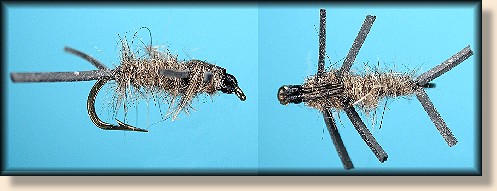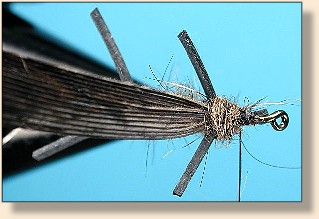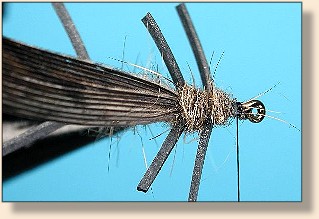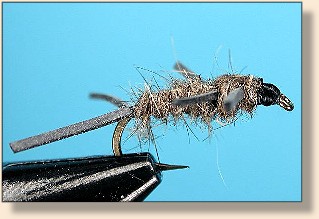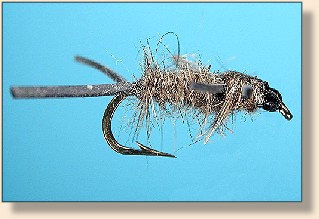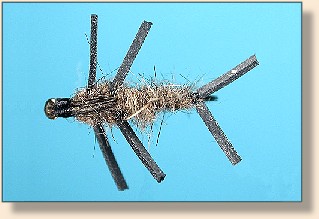Rubber Legged Hare's Ear
By Al Campbell, Rapid City, SD
You know how to tie a Hare's Ear, but have you ever thought
about the way it would look with legs? Since flies like
the girdle bug and others with rubber legs are very effective,
adding rubber legs to a Hare's Ear is also attractive to fish.
I think this pattern looks like a easy but convincing stonefly
nymph imitation. Considering my success with this and similar
patterns during stonefly hatches, I would guess the fish agree.
This is my "go-to" nymph pattern during stonefly hatches. It's
also a super pattern for bluegills and sunfish.
I tied this pattern with dark legs and hair, but it is equally
effective in lighter colors with light legs. Dark brown and
black are favorite colors for early stoneflies, but I gradually
shift to lighter colors and larger hooks as the season progresses
and the sub-species of stoneflies get larger. By July I'm usually
using colors and sizes to match either golden stones or the smaller
yellow sallies that hatch locally.
Don't think that this pattern can only be tied the way you see it
here. For damselfly nymphs, tie it with light olive or yellow
legs, a tuft of olive marabou for a tail, and a light olive body.
Three tails and a set of legs made from micro-sized rubber and
you have a passable mayfly. Substitute black biots for a tail,
peacock for a body and white rubber legs and you have a unique
version of a prince nymph, with or without the bead head. You
can add a bead head or lead wrapped weight to any of these
variations.
Materials: Rubber Legged Hare's Ear
Hook: Standard dry fly, 1X or 2X .
Thread: 6/0, black.
Tail: Black rubber leg material.
Body: Dark brown hare's ear or similar coarse dubbing.
Rib: Copper or gold wire.
Shell Back: Turkey or pheasant tail fibers
(pearl tinsel adds a nice flashback touch).
Legs: Black rubber leg material.
Tying Steps:
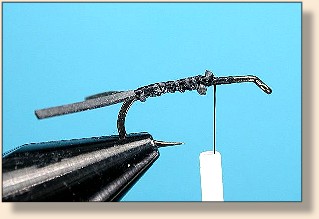
Step 1. Tie in a split tail of rubber leg material.
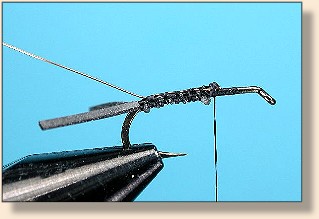
Step 2. Add a copper wire.
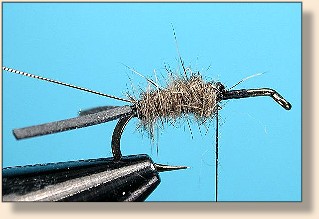
Step 3. Dub a coarse body of hare's ear dubbing.
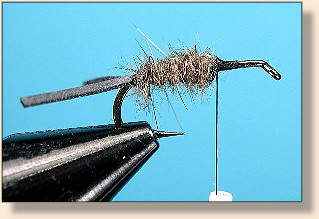
Step 4. Rib the body with the wire.
|

